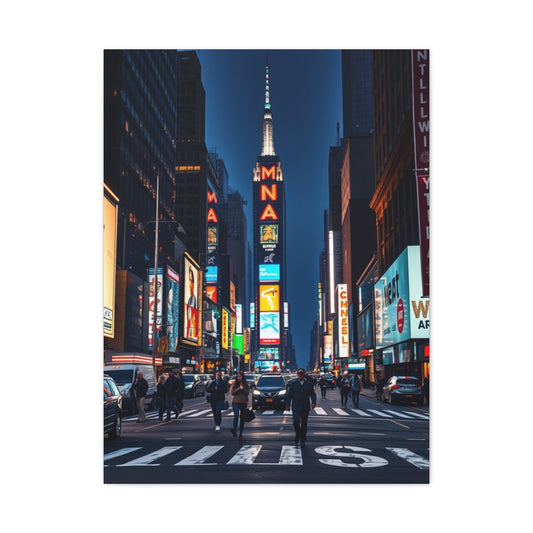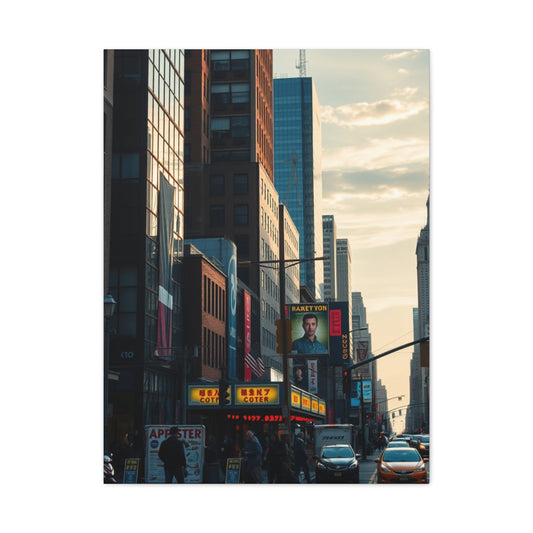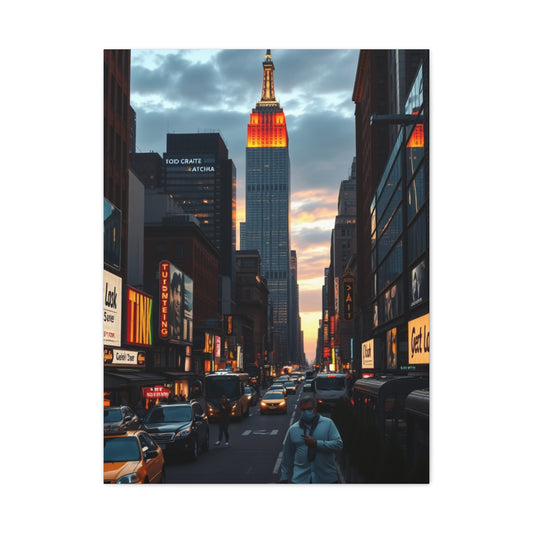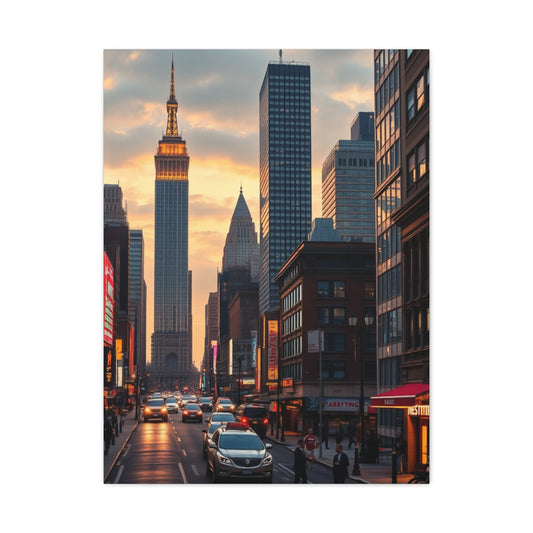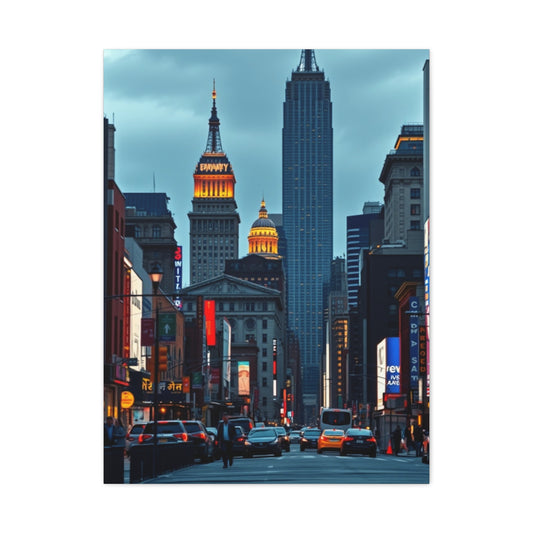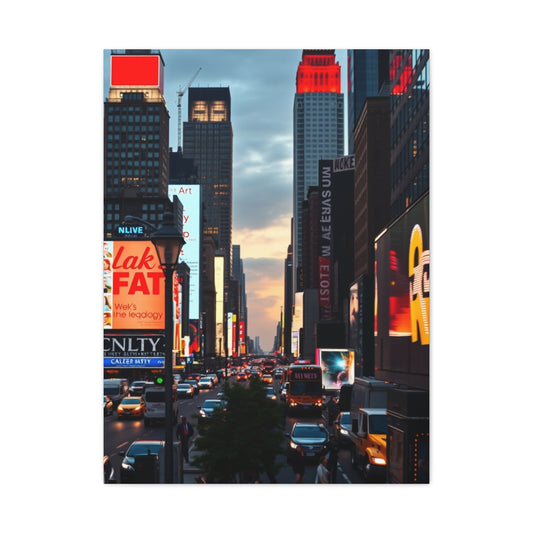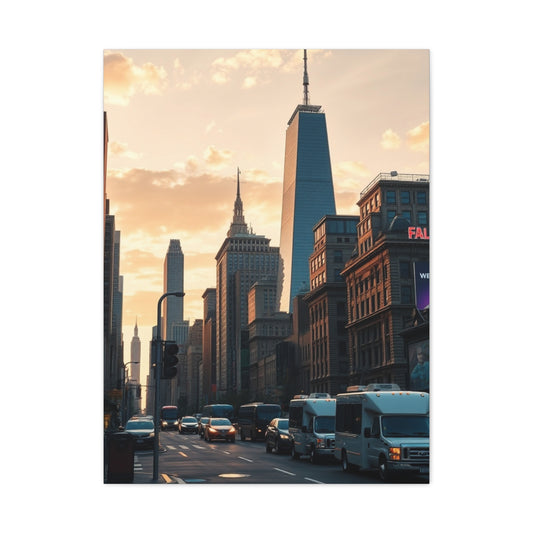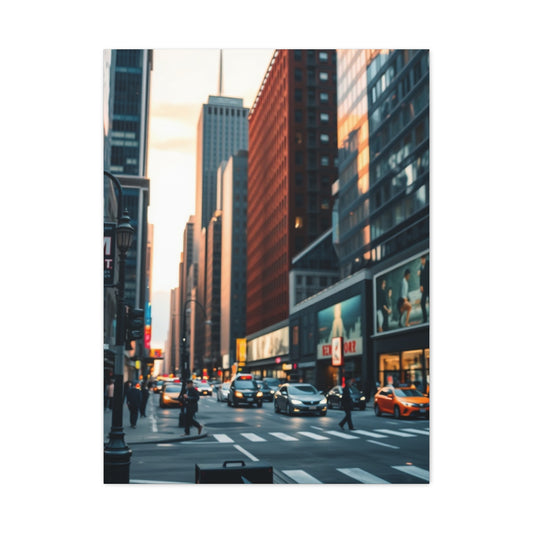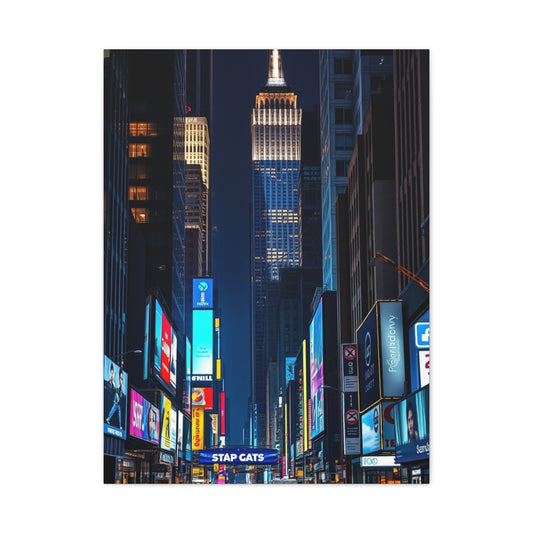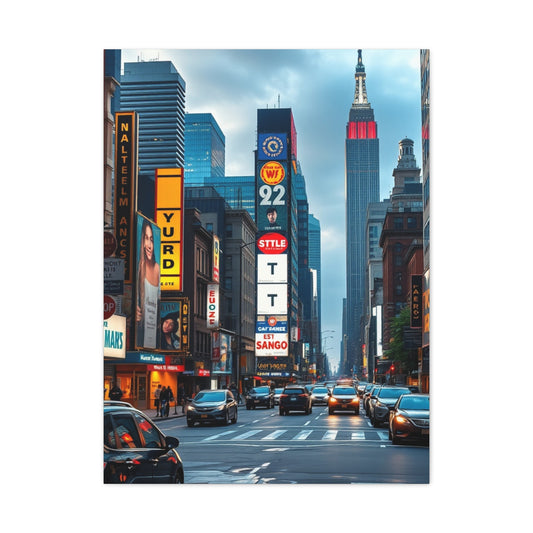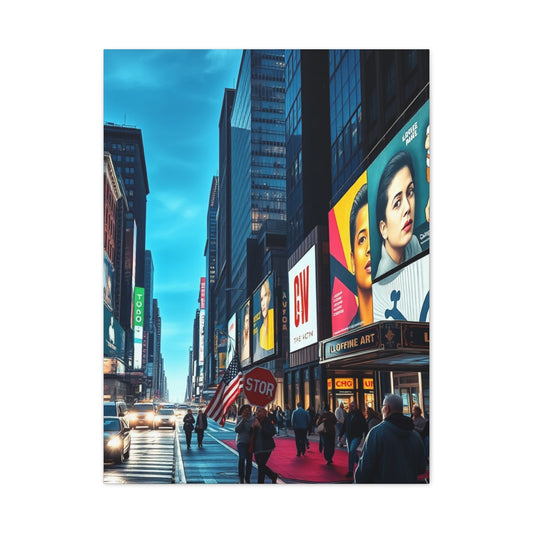Stylish New York City Wall Art Decor to Instantly Refresh Your Space
When it comes to wall decor, few themes embody the soul of modern urban living like New York City wall art. Known as the city that never sleeps, New York has inspired artists, architects, and dreamers for centuries. Its bustling streets, towering skyscrapers, and diverse culture provide endless inspiration for those who wish to bring a slice of the metropolis into their homes. Wall art has long been one of the most effective ways to transform a room, and New York-themed decor gives homeowners the chance to channel the rhythm of the city right into their living spaces.
Whether it is a minimal apartment in Brooklyn, a small Manhattan studio, or a suburban home longing for a touch of cosmopolitan energy, New York City wall art bridges the gap between everyday living and the exhilarating atmosphere of the urban jungle. By carefully selecting wall decor inspired by NYC, homeowners can create spaces that feel vibrant, cultured, and deeply personal.
This section explores the origins of New York-inspired wall decor, its historical background, the key concepts behind it, different categories of wall art, and practical applications that make it adaptable to diverse interiors. From vintage maps to neon lighting, the possibilities are endless.
Historical Background
The tradition of incorporating New York imagery into wall decor has roots in the early 20th century. As skyscrapers began to redefine the skyline, artists captured these modern marvels through prints, posters, and photographs. The rise of art movements such as Art Deco and Abstract Expressionism placed New York at the heart of the global art scene, reinforcing its cultural significance.
During the roaring twenties, posters of the Empire State Building, the Chrysler Building, and the Brooklyn Bridge became popular souvenirs for travelers and symbols of ambition for those living elsewhere. The Great Depression also gave rise to street photography, documenting the struggles and resilience of New Yorkers. These images later became treasured works of wall art, telling stories of endurance and survival.
By the mid-20th century, the Pop Art movement led by Andy Warhol and others cemented New York’s position as both a subject and a hub of creativity. The subway graffiti culture of the 1970s and 80s brought urban aesthetics into mainstream recognition, influencing wall art styles that remain popular today. Vintage photographs, old subway signs, and historic maps of New York still carry an aura of authenticity, making them timeless decor pieces.
Today, New York wall decor continues to evolve. With advances in printing technology and digital design, people can bring the city into their homes in countless ways. From sleek canvas prints of Times Square to metal wall sculptures of the skyline, the representation of New York in art has grown from historical documentation to a full-fledged design philosophy.
Core Concepts and Foundations
The foundation of New York wall decor lies in the idea of capturing energy, movement, and cultural significance. Unlike generic city-themed artwork, New York wall art is more than visual appeal; it is an emotional connection to ambition, resilience, and diversity.
One of the core concepts is the skyline, a motif that reflects modernity and human achievement. The angular forms of high-rises symbolize aspiration and determination. Another concept revolves around iconic landmarks, each carrying its own narrative. The Statue of Liberty embodies freedom, the Brooklyn Bridge represents connection, and Central Park symbolizes a balance between nature and urbanity.
Another foundational idea is the layering of old and new. Vintage New York maps paired with modern digital prints create an interplay of history and progress. Wall decor rooted in NYC often celebrates contrasts—glossy neon signs against raw brick walls, black-and-white photographs alongside colorful graffiti-inspired canvases. These juxtapositions reflect the eclectic personality of the city itself.
The rhythm of New York life also plays into design principles. Wall art inspired by the city often incorporates dynamic lines, bold compositions, and vivid imagery that mimic the nonstop movement of its streets. Even minimalist representations of subway maps or abstract impressions of the skyline resonate with the pulse of the city.
Types and Categories
New York City wall art comes in a variety of forms, each offering its own aesthetic impact. Choosing among them depends on the desired atmosphere of a room, whether calm, energetic, nostalgic, or modern.
Landmark Artwork
Landmark-based pieces remain among the most popular choices. Prints or canvases of the Empire State Building, Brooklyn Bridge, Times Square, or Chrysler Building can instantly transport viewers to New York’s most iconic locations. These works serve not only as decoration but also as tributes to human creativity and architectural marvels.
Vintage Maps and Photographs
Maps and black-and-white images of New York hold a certain poetic quality. They capture the evolution of the city, from early cartographic renderings to snapshots of mid-century life. These works add a sense of history and sophistication, making them ideal for gallery walls, libraries, or home offices.
Modern Wall Decals
Decals have become a practical and flexible form of wall decor. NYC-inspired decals range from stylized skylines to subway icons, allowing renters or those seeking temporary design solutions to personalize their walls without permanence. Their ease of application makes them attractive for people seeking quick transformations.
Personal Photography
Personal photographs of New York carry sentimental value. Framing one’s own images from visits to the city creates a direct emotional bond between the individual and their decor. Unlike mass-produced art, personal photography tells a story unique to the homeowner, adding authenticity to the aesthetic.
Neon and Light Installations
Lighting has emerged as an unconventional yet powerful form of wall art. Neon signs that spell out iconic phrases such as “I Love NY” or stylized versions of the skyline create a playful and contemporary vibe. Beyond their decorative function, they serve as lighting solutions, casting colorful glows that transform a room’s atmosphere.
Abstract and Contemporary Interpretations
For those who prefer a subtler nod to the city, abstract works inspired by its architecture or rhythm offer a modern take. These may include geometric prints mimicking skyscraper outlines or expressionist canvases capturing the city’s chaos and vibrancy. Such pieces work particularly well in minimalist or avant-garde interiors.
Practical Applications
Incorporating New York wall art into a home is not just about selecting beautiful pieces; it is about intentional placement and integration with the overall design. Each application can dramatically influence the tone of a space.
In a living room, a large canvas of the Manhattan skyline above the sofa becomes the focal point, setting the tone for the entire room. Pairing it with accent lighting enhances its dramatic impact.
In a home office, vintage photographs of Wall Street or black-and-white prints of Central Park can inspire productivity while adding intellectual charm. They remind one of the balance between ambition and reflection.
Bedrooms can benefit from softer interpretations of New York art, such as watercolor skylines or sepia-toned photographs that create a calming yet stylish environment.
For dining areas, neon signage or graffiti-inspired artwork can infuse an edgy, social energy, turning the space into a lively hub for conversation and gatherings.
Gallery walls offer another practical application. Combining personal travel photos with vintage maps, postcards, and modern prints creates a layered effect that reflects both the personality of the homeowner and the eclectic nature of New York.
Even small spaces, such as entryways, can be transformed with a single iconic piece. A framed subway map by the door or a bold Times Square print makes a powerful first impression, welcoming guests with the unmistakable character of the city.
Lighting also plays a crucial role. By highlighting wall art with spotlights or ambient lighting, the decor becomes more immersive, reinforcing the New York theme.
Techniques and Methods
Incorporating New York City wall art into a home requires both creativity and technique. While the theme itself is powerful, the way it is applied can transform a plain wall into an evocative story of urban life. One of the most effective techniques is the layering method, where different types of wall art—photographs, canvases, maps, and even neon elements—are combined to create a textured display. This approach mimics the multifaceted character of New York, where history, culture, and innovation exist side by side.
Another common technique is symmetry and balance. For larger spaces, arranging wall art symmetrically, such as placing two landmark prints on either side of a central canvas, creates a sense of order while still celebrating the dynamism of the city. Conversely, asymmetry works well in smaller, creative spaces, reflecting the unpredictable yet harmonious rhythm of New York’s neighborhoods.
A gallery wall method remains popular because it allows for storytelling. By curating an assortment of framed subway tickets, skyline sketches, and vintage maps alongside personal photographs, homeowners weave a narrative that feels authentic and layered. Each piece may differ in size or style, yet together they embody the eclectic character of the city.
For those who favor minimalism, large-scale statement pieces are an effective technique. A single panoramic shot of Manhattan at dusk can carry the energy of the city without overwhelming the space. The use of muted tones or abstract interpretations further refines this method, making it suitable for modern interiors.
Lighting techniques also play an essential role. Spotlights angled toward wall art highlight textures and details, while backlit frames or neon pieces provide an ambient glow. The interplay of shadow and illumination echoes the nightlife of New York, bringing subtle drama to otherwise static imagery.
Finally, the use of materials is a technique often overlooked. Metal wall sculptures of the skyline, wood panels engraved with street maps, or canvas reproductions of graffiti art introduce a tactile quality. These diverse media enhance visual interest and invite interaction, making the decor more immersive.
Challenges and Common Mistakes
While New York wall art offers immense potential, there are several challenges and pitfalls that can diminish its impact. One of the most common mistakes is overcrowding. In the enthusiasm to capture the vibrancy of the city, homeowners often place too many pieces in one area. This creates visual clutter, reducing the power of individual artworks. The city may be bustling in real life, but wall decor thrives on balance and thoughtful placement.
Scale is another frequent issue. Large landmark canvases placed in compact rooms can overwhelm the space, while tiny prints in expansive living areas may seem underwhelming. Achieving the right proportion between wall art and wall size is crucial for harmony.
Color coordination also presents a challenge. The city itself is a mix of bold lights, neutral tones, and muted industrial shades. Without careful selection, combining neon art with black-and-white photographs may result in visual dissonance. A clear color palette ensures that diverse pieces still feel unified.
Another mistake is ignoring personal connection. Many homeowners purchase generic prints of New York without considering their own relationship to the city. While mass-produced pieces can be attractive, they may lack authenticity. Incorporating personal photographs or artworks that resonate emotionally avoids the risk of creating a space that feels impersonal.
Placement errors are also common. Hanging wall art too high or too low disrupts the flow of a room. Ideally, artwork should align with eye level to maximize engagement. Similarly, neglecting proper framing or protective glass for delicate photographs can lead to long-term damage.
Finally, a challenge arises when wall art is treated as an afterthought rather than a central design element. New York wall decor has the potential to define a room, but if it is added haphazardly, its impact is reduced. Proper planning, integration with furniture, and coordination with lighting are essential to achieving a cohesive aesthetic.
Trends and Future Outlook
New York City wall decor, like the city itself, is constantly evolving. Current trends reflect both nostalgia and innovation, blending vintage authenticity with futuristic design elements. One of the strongest trends is the resurgence of vintage maps and archival photography. These works appeal to a growing appreciation for history and storytelling, providing a timeless elegance that resonates with both younger and older generations.
At the same time, digital prints and large-format photography have surged in popularity. High-definition cityscapes captured by drones or panoramic lenses bring unparalleled clarity and scale to interiors. These modern visuals allow homeowners to experience the grandeur of the skyline in extraordinary detail.
Graffiti-inspired art is also making a comeback, influenced by New York’s legendary street culture. Murals, prints, and canvas reproductions of graffiti inject boldness and authenticity into interiors. This trend particularly resonates with younger audiences who admire the rebellious spirit of urban creativity.
Sustainability is shaping the future of wall decor as well. Recycled materials, eco-friendly inks, and reclaimed wood frames align with the growing consciousness toward environmental responsibility. Artists and manufacturers are finding innovative ways to represent the city while reducing ecological impact.
Interactive and digital wall art is another emerging trend. With advances in projection mapping and augmented reality, homeowners can now display dynamic New York imagery that shifts throughout the day. A skyline might glow at night, while daytime scenes appear in the morning, creating a living artwork that mirrors the rhythm of the city itself.
Looking ahead, customization is expected to dominate the future. Personalized maps of specific neighborhoods, bespoke sketches of favorite streets, and tailor-made collages of personal photographs will redefine New York wall decor. The trend moves away from mass-produced art toward unique expressions that resonate with individual experiences.
As technology advances and design preferences evolve, New York wall decor will likely continue blending history, innovation, and sustainability. Its future lies in creating immersive experiences that reflect both the timeless grandeur of the city and the intimate stories of those who cherish it.
Expert Insights
Design experts and art curators emphasize that New York wall art should be approached with intention rather than impulse. Interior designers often advise beginning with a central piece that captures the spirit of the city, then building around it with complementary works. This method ensures cohesion while allowing room for experimentation.
Curators highlight the importance of authenticity. Rather than relying solely on generic images, they recommend sourcing artwork from local New York photographers, street artists, or small galleries. Such pieces not only support creative communities but also carry a unique perspective unavailable in mass-market reproductions.
Experts also note the psychological impact of wall decor. New York wall art can serve as a daily source of motivation, reminding residents of ambition, resilience, and cultural vibrancy. A carefully chosen piece of Times Square, for instance, can energize a workspace, while a tranquil Central Park print may foster calm in a bedroom.
From a technical perspective, framing remains a crucial consideration. Professional framers suggest choosing frames that enhance the character of the artwork without overpowering it. A sleek black frame may highlight a modern cityscape, while reclaimed wood suits vintage maps. Proper framing not only elevates visual appeal but also preserves artwork for years to come.
Lighting consultants emphasize the synergy between illumination and wall decor. They recommend layering different types of light—ambient, accent, and task—to maximize impact. Neon art should be balanced with softer surrounding lights, while photographs benefit from directional spotlights that highlight detail.
Ultimately, experts agree that the best approach is personal and intentional. New York wall decor is not merely about aesthetics; it is about capturing a relationship with the city. Whether through professional prints, personal photography, or experimental art, the goal is to create a space that resonates with identity and emotion while celebrating the timeless energy of New York.
Emerging Trends in Wall Art
Wall art is no longer limited to framed prints or classic paintings. In recent years, it has evolved into a vast arena of experimentation, blending traditional craftsmanship with modern technology. As lifestyles change and design philosophies shift, new trends are emerging that reflect both the pace of contemporary life and a longing for meaningful expression.
One of the strongest trends in wall art is the emphasis on personalization. Homeowners increasingly prefer pieces that tell a story unique to them rather than mass-produced designs. Custom illustrations, personalized maps of neighborhoods, and tailored collages have become central to this movement. Instead of buying generic skyline prints, people now seek artworks that capture their own experiences of New York, Paris, or Tokyo, creating a sense of intimacy within their decor.
Sustainability is another dominant theme. Wall art crafted from recycled wood, eco-friendly inks, and upcycled materials has found its way into modern interiors. This trend reflects a wider consciousness about environmental responsibility and a desire to surround oneself with decor that is both meaningful and sustainable. Vintage and reclaimed items are also being repurposed as decorative pieces, giving walls a narrative steeped in history and authenticity.
Technology is reshaping wall art in surprising ways. Augmented reality installations, projection mapping, and interactive screens have allowed artworks to come alive within a room. A skyline may shimmer at night, or an abstract mural might respond to ambient lighting, turning passive decor into an immersive experience. This trend blurs the boundary between art and environment, creating interiors that feel dynamic and alive.
Minimalism continues to influence contemporary wall art, but it has taken on new interpretations. Instead of stark emptiness, minimal wall decor now often incorporates subtle textures, muted colors, and geometric shapes that balance serenity with sophistication. The influence of Scandinavian and Japanese design philosophies has contributed to this aesthetic, focusing on harmony, balance, and mindful living.
Cultural storytelling is also gaining traction. Wall art that reflects heritage, local craftsmanship, or global influences creates a richer connection between people and their spaces. For example, abstract depictions of New York graffiti culture or hand-drawn maps of historic streets provide decor with both visual beauty and cultural resonance.
Finally, the trend toward multifunctional decor has expanded into wall art. Shelving units that double as sculptural pieces, wall-mounted lighting that serves as an artistic statement, and acoustic panels designed with aesthetic patterns highlight how function and form are merging in creative ways.
Together, these trends reveal a shift from wall art as simple decoration toward a deeper role as storytelling, interaction, and sustainability. Walls are becoming canvases of personal identity, cultural heritage, and technological innovation.
Step-by-Step Guide to Choosing Wall Art
Selecting the right wall art may seem daunting, but with a structured approach, anyone can transform blank walls into meaningful visual landscapes. The following steps outline how to choose wall decor that feels intentional and lasting.
Step 1: Define the Purpose of the Space
The first step is understanding the function of the room. A living room might call for a bold centerpiece, while a bedroom benefits from calm and reflective imagery. Identifying the emotional tone of the space guides the type of wall art that will best suit it.
Step 2: Establish a Theme or Narrative
Every piece of wall decor should contribute to a larger story. Whether the theme is urban energy, natural serenity, or cultural heritage, defining this narrative early ensures cohesion. For New York-inspired decor, the theme could be architectural achievement, personal travel memories, or a balance between old and new.
Step 3: Consider Scale and Proportion
Proportion is critical to ensuring wall art complements rather than overwhelms a space. Large-scale works can define a room, while smaller pieces are better suited for intimate corners or gallery walls. Measuring available wall space before purchasing prevents common mistakes in scale.
Step 4: Select a Color Palette
Colors set the emotional tone of wall decor. Harmonizing wall art with existing furniture and wall tones creates cohesion. For example, a black-and-white skyline photograph may pair well with neutral interiors, while neon-inspired graffiti art works best in bold, contemporary spaces.
Step 5: Choose the Medium
Different media create different atmospheres. Canvas prints offer texture, framed photographs convey sophistication, and mixed-media pieces add dimension. Materials such as reclaimed wood or metal can bring additional layers of interest.
Step 6: Integrate Personal Elements
Incorporating personal photographs, souvenirs, or travel mementos creates a more meaningful wall display. A photograph taken during a visit to Times Square carries far more emotional weight than a generic print from a store.
Step 7: Plan Placement and Layout
Placement determines the impact of wall art. Central positioning above furniture creates focal points, while staggered arrangements add movement and character. For gallery walls, arranging pieces on the floor before hanging allows for experimentation with composition.
Step 8: Enhance with Lighting
Proper lighting elevates wall decor. Directional spotlights highlight key pieces, while ambient backlighting creates atmosphere. Neon art doubles as both lighting and artwork, providing a playful and modern twist.
Step 9: Frame with Care
Framing not only protects artwork but also defines its style. Sleek black frames suit modern prints, while distressed wood complements vintage maps. A mismatched collection of frames can also create a casual, eclectic feel for gallery walls.
Step 10: Revisit and Refresh Over Time
Wall decor should not remain static. Just as a city evolves, so should the art within a home. Rotating pieces seasonally or adding new works keeps the space fresh and dynamic.
Step-by-Step Guide to Creating a Gallery Wall
A gallery wall is one of the most versatile ways to display wall art, but it requires planning to avoid becoming cluttered.
Step 1: Collect a Variety of Pieces
A successful gallery wall combines photographs, prints, maps, and personal memorabilia. Gathering diverse yet thematically linked items creates a layered effect.
Step 2: Select a Cohesive Theme
Though variety is encouraged, a unifying element such as a color palette, subject matter, or framing style maintains visual balance.
Step 3: Plan the Layout
Arranging pieces on the floor before hanging helps visualize balance. Starting with the largest piece as an anchor and building outward ensures structure.
Step 4: Vary Sizes and Orientations
Mixing vertical and horizontal pieces creates movement. Smaller items fill gaps and prevent the wall from appearing too rigid.
Step 5: Use Consistent Spacing
Equal spacing between frames maintains cohesion, while irregular spacing can create a more organic look. The choice depends on whether the goal is order or spontaneity.
Step 6: Mount with Precision
Using proper wall anchors and level tools prevents crooked alignments. A gallery wall requires careful execution for maximum impact.
Step 7: Add Dimensional Elements
Incorporating wall sculptures, neon signs, or shadow boxes adds depth to a gallery wall, making it feel more dynamic.
Step 8: Step Back and Adjust
Viewing the gallery wall from a distance helps identify imbalances or overcrowding. Adjusting before finalizing ensures long-term satisfaction.
Step-by-Step Guide to Incorporating Lighting as Wall Art
Lighting can transform wall decor into an immersive experience, and incorporating it thoughtfully elevates both function and design.
Step 1: Choose the Type of Lighting
Options include neon signs, wall-mounted sconces, backlit panels, or spotlights. Each carries its own aesthetic and function.
Step 2: Define the Mood
Neon lights create playful energy, while warm backlighting fosters relaxation. The mood should align with the room’s purpose.
Step 3: Integrate with Artwork
Positioning lighting to enhance existing artwork creates synergy. For example, spotlighting a skyline canvas enhances its drama, while neon signs can stand alone as both art and illumination.
Step 4: Balance Brightness
Overly harsh lighting can overpower the artwork. Adjustable dimmers provide flexibility, ensuring the decor adapts to different occasions.
Step 5: Consider Energy Efficiency
LED-based solutions provide sustainability while maintaining visual appeal. This choice aligns with the growing trend toward eco-conscious design.
Future Outlook of Wall Art
The world of wall art is in constant flux, mirroring cultural transformations, technological progress, and shifts in personal taste. Looking ahead, wall decor will no longer be perceived as a static embellishment but as an evolving canvas that adapts to the rhythms of life. The future promises more interactivity, deeper personalization, and integration with sustainable practices.
One of the strongest indicators for the future is the rise of digital and interactive wall art. With advancements in projection mapping and smart displays, walls will soon function as living surfaces capable of changing with mood or time of day. Imagine a skyline glowing at night and fading into sepia tones by morning, or a digital mural that responds to music and movement within a room. This convergence of technology and creativity transforms decor from fixed imagery into a fluid experience.
Sustainability will also dominate the future landscape of wall art. As ecological awareness becomes ingrained in everyday life, consumers and artists alike will continue experimenting with biodegradable materials, eco-friendly paints, and repurposed objects. Frames made from reclaimed wood, canvases crafted from recycled fabrics, and prints produced with plant-based inks represent just the beginning of this movement. The desire to connect artistry with responsibility ensures that wall decor will reflect environmental values as much as aesthetic ones.
Globalization will further influence emerging styles. Cities like New York, Tokyo, and Berlin will remain sources of inspiration, but cross-cultural blending will produce new narratives in wall art. Elements of graffiti, calligraphy, textile weaving, and digital abstraction may converge into hybrid forms, reflecting an increasingly interconnected world. New York wall art, for instance, may incorporate hints of international design while still holding onto its architectural and cultural identity.
Personalization will become even more central. In the future, homeowners may not just purchase wall art but co-create it with artists or design software. Interactive platforms could allow users to generate personalized skylines, custom maps, or portraits interwoven with their own photographs. This trend signifies a shift away from mass production toward individualized expression, ensuring that every wall becomes a reflection of identity.
Finally, the role of wall art in wellness and psychology will continue expanding. Studies already show that imagery influences mood, productivity, and mental balance. Future designs may deliberately incorporate calming visuals, energizing patterns, or therapeutic lighting to create environments that nurture emotional health. In this sense, wall decor will not only beautify but also heal and inspire.
Cultural Significance of Wall Art
Wall art has always been more than decoration; it is a mirror of culture, values, and aspirations. Its cultural significance lies in its ability to capture the essence of an era, a place, or a collective memory. For centuries, murals, paintings, and carvings have served as chronicles of human history. Today, wall decor continues that role within personal and collective spaces.
New York wall art exemplifies this cultural role. Its depictions of skyscrapers, bustling streets, and iconic landmarks symbolize ambition, resilience, and diversity. To hang such images in one’s home is to embrace not only an aesthetic but also an ideology of progress, energy, and opportunity. In the same way, vintage maps and photographs connect us with heritage, reminding us of how the city has grown and transformed.
Cultural storytelling through wall art extends beyond cities. Indigenous patterns, folk motifs, and global textile traditions are increasingly being reinterpreted in contemporary designs. By integrating these influences, wall art fosters dialogue between the past and present, between local identity and global perspective.
In a time of rapid digitalization, physical wall art also represents a yearning for tactile authenticity. A canvas textured with brushstrokes or a frame carved from reclaimed timber provides a sensory connection that screens cannot replicate. This duality—between the digital future and the artisanal past—reflects the cultural tension of our age, and wall art stands at the intersection of both.
Integration of Wall Art with Architecture and Interiors
The future of wall decor also lies in deeper integration with architectural elements. Rather than being treated as an afterthought, wall art will increasingly be designed in tandem with interiors. Built-in wall panels with artistic patterns, modular shelving that doubles as sculptural installations, and walls designed for projection art represent this synthesis of structure and aesthetics.
In contemporary architecture, walls are no longer static dividers but dynamic planes of expression. Incorporating art directly into these surfaces blurs the line between decor and design. For example, a living room wall may serve simultaneously as an acoustic panel, a projection surface, and an artistic statement. This multifunctional approach reflects a growing emphasis on adaptability and efficiency within interiors.
Longevity and Timelessness in Wall Decor
While trends come and go, certain qualities ensure that wall art remains timeless. Simplicity, authenticity, and emotional resonance are among these. A black-and-white photograph of the Brooklyn Bridge retains power across decades because it embodies not only aesthetic beauty but also cultural memory. Similarly, maps of old Manhattan or abstract impressions of the skyline endure because they transcend temporary fashions.
Future homeowners will likely continue to invest in artworks that feel both rooted and versatile. Pieces that can adapt to shifting design schemes, or that carry personal significance beyond visual appeal, will hold long-term value. In this sense, wall art functions not only as a decorative choice but as an heirloom, passed from one generation to another with meaning intact.
Evolution of Artistic Media
The mediums through which wall art is produced will continue expanding. Beyond canvas and paper, we can expect innovations in digital textiles, laser-cut metals, and even bioluminescent materials. Advances in 3D printing will allow for customized reliefs and sculptures that bring depth to flat walls. Meanwhile, holographic technologies may one day allow walls to host shifting images visible from different perspectives, blurring the line between decor and spectacle.
Yet alongside these innovations, traditional media will remain cherished. Hand-painted murals, calligraphy, and photography will continue to thrive, particularly among those who value craftsmanship and authenticity. The interplay between emerging technology and time-honored techniques will ensure a diverse and vibrant future for wall decor.
Role of Wall Art in Emotional Spaces
As homes increasingly serve as sanctuaries, the role of wall decor in shaping emotional landscapes becomes more pronounced. Wall art influences not only visual aesthetics but also psychological well-being. Bright, colorful works can energize a space, while muted tones and minimalist compositions provide calm.
Future design philosophies may deliberately employ wall art as a therapeutic tool. Offices could incorporate motivational cityscapes to inspire ambition, while wellness centers may use tranquil murals of nature or abstract patterns to encourage relaxation. In homes, art may be curated to support mindfulness, creativity, or connection, transforming walls into tools for emotional nourishment.
Conclusion
Wall art has journeyed from ancient cave paintings to futuristic digital displays, but its essence remains unchanged: the human desire to express, connect, and transform spaces. The exploration of New York wall decor reveals how a single city can inspire countless interpretations, from historical photographs to neon-lit installations. Yet this journey also reflects a broader truth: wall art is not bound to geography but to imagination.
As techniques evolve and challenges are overcome, as trends shift and expert insights refine practices, the future of wall art appears both dynamic and enduring. It will increasingly embody sustainability, personalization, cultural storytelling, and technological innovation. The walls of tomorrow will not simply hold art; they will be art, living and changing with those who inhabit the spaces.
For individuals seeking to elevate their homes, the lesson is clear: wall decor is more than ornamentation. It is a declaration of identity, a bridge between past and future, a source of beauty and meaning. Whether through the timeless image of a city skyline, the intimacy of personal photographs, or the innovation of digital installations, wall art allows us to craft spaces that resonate with who we are and who we aspire to be.
In the end, walls are not boundaries but canvases. They hold the power to inspire, to comfort, to energize, and to tell stories. To embrace wall art is to embrace the art of living itself, and its future promises to keep transforming our interiors into landscapes of imagination and culture.

